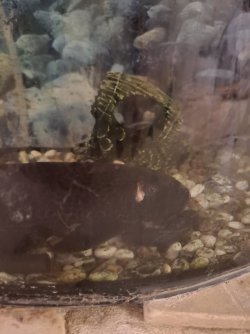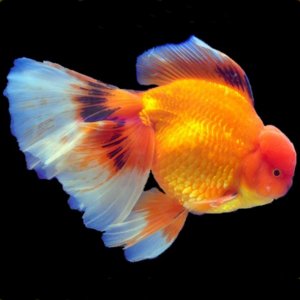Leave the fish in the tank when you do water changes and gravel cleans. Buy or make a basic model gravel cleaner and use it to clean the gunk out of the substrate when you do water changes. There is a picture of a basic model gravel cleaner in the following link. It's about half way down the page.
Aquarium cleaning should take 30 minutes every two weeks. Learn how the professionals do it in 18 easy steps.

www.about-goldfish.com
You can also make a gravel cleaner out of a plastic drink bottle (like a Coca Cola bottle) and a length of plastic hose or garden hose.
Get a 1, 1.5 or 2 litre plastic drink bottle.
Remove the top and plastic ring at the top and throw those in the recycling.
Use a pair of scissors to cut the bottom off the bottle and throw the bottom bit in the recycling.
The bottle that is left is the gravel cleaner.
Get a garden hose or buy some plastic hose from a hardware that goes inside the bottle. That is your gravel cleaner.
If you have a big aquarium, you can buy a plastic hose that fits snuggly on the outside of the top of the bottle. The bottle where you drink out of gets pushed inside a plastic hose so you have a bigger diameter hose for draining water out faster.
A lot of people simply use a 2 litre bottle and a garden hose. They run the hose outside onto their lawn or garden and gravel clean 1/2 to 2/3s of the water outside, then refill the tank with clean dechlorinated water.
You can check on YouTube to find out how to use a gravel cleaner. They are pretty simple and you simply start syphoning water out of the tank and push the gravel cleaner part into the substrate in the aquarium. You lift the gravel cleaner up and the gunk in the gravel gets sucked out with some of the water. You move the gravel cleaner around the tank cleaning as much gravel as possible in the time it takes to remove some of the water. You then stop gravel cleaning and refill the tank with dechlorinated water.
--------------------
If you have big rocks or pieces of driftwood in the tank, you can take them out when you gravel clean the tank. The big rocks and wood should be hosed off outside about once a month.
--------------------
Salt (sodium chloride) won't cause any harm at the dose rate of 1 heaped tablespoon of salt for every 20 litres (5 gallons) of water. I will add more info about salt below.
A broad spectrum medication that might help is Waterlife Myxazin. It might not be available where you are and shouldn't be necessary unless the wound gets infected and doesn't respond to salt. Outside of that, any liquid fish medications that treat fungus and bacteria will probably work but check the instructions on how much to use for scaleless fish like catfish. A lot of medications recommend a half dose for scaleless fishes.




